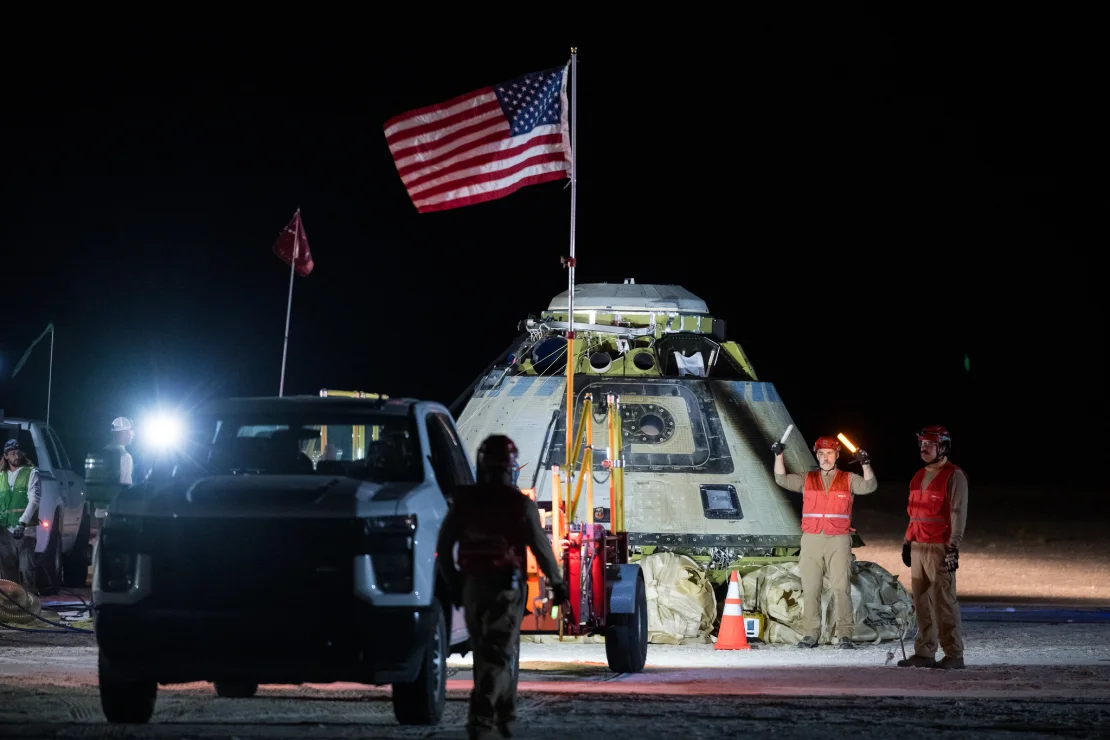
Boeing Starliner Returns from ISS in Uncrewed Flight
Boeing’s Starliner capsule returned from the International Space Station (ISS) on September 7, marking the end of its nearly three-month mission in space. The capsule, however, returned to Earth without its two test pilots, NASA astronauts Butch Wilmore and Suni Williams, who will remain on the ISS until 2025. NASA chose not to fly the astronauts back due to lingering issues with the spacecraft’s thrusters.
The Starliner undocked from the ISS around 6 p.m. ET and spent six hours in orbit before touching down at White Sands Space Harbor in New Mexico at 12:01 a.m. ET on Saturday. This marked the first time a U.S.-made spacecraft landed on solid ground, a milestone Boeing hopes will simplify recovery and refurbishment.
The return flight was part of a long-delayed test of the Starliner, which encountered multiple issues during its journey to the ISS. The spacecraft suffered helium leaks and problems with its reaction control system thrusters, leading NASA to decide it was safer to return the vehicle without the crew.
Mark Nappi, Boeing’s vice president and program manager, praised the teams for ensuring a successful landing. NASA officials emphasized that the mission’s data will be reviewed to determine the next steps for the Starliner program.
Boeing has invested heavily in correcting past problems with the Starliner, and its future role in NASA’s commercial crew missions remains uncertain.







